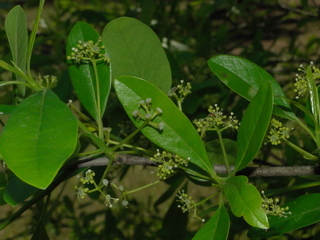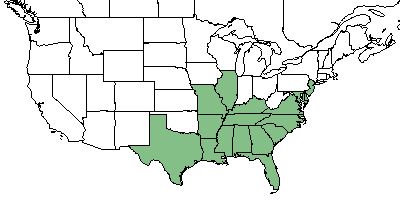Difference between revisions of "Nyssa biflora"
(→Description) |
(→Distribution) |
||
| Line 27: | Line 27: | ||
==Distribution== | ==Distribution== | ||
| + | ''N. biflora'' is found throughout the southeastern United States; specifically, Florida, Georgia, Alabama, South Carolina, North Carolina, Virginia, Maryland, Deleware, New Jersey, Tennessee, Kentucky, Mississippi, Louisiana, Texas, Arkansas, Missouri, and Illinois.<ref name= "USDA"> [https://plants.usda.gov/core/profile?symbol=CEAM USDA Plant Database]</ref> | ||
| + | |||
==Ecology== | ==Ecology== | ||
===Habitat=== <!--Natural communities, human disturbed habitats, topography, hydrology, soils, light, fire regime requirements for removal of competition, etc.--> | ===Habitat=== <!--Natural communities, human disturbed habitats, topography, hydrology, soils, light, fire regime requirements for removal of competition, etc.--> | ||
Revision as of 15:48, 24 May 2018
| Nyssa biflora | |
|---|---|

| |
| Photo by Bobby Hattaway at the Discover Life Database | |
| Scientific classification | |
| Kingdom: | Plantae |
| Division: | Magnoliophyta - Flowering plants |
| Class: | Magnoliopsida - Dicots |
| Order: | Cornales |
| Family: | Cornaceae |
| Genus: | Nyssa |
| Species: | N. biflora |
| Binomial name | |
| Nyssa biflora Walter | |

| |
| Natural range of Nyssa biflora from USDA NRCS Plants Database. | |
Contents
Taxonomic Notes
Synonym: N. sylvatica (Marshall)
Variety: none
Description
N. biflora is a perennial tree of the Cornaceae family that is native to North America. [1]
Distribution
N. biflora is found throughout the southeastern United States; specifically, Florida, Georgia, Alabama, South Carolina, North Carolina, Virginia, Maryland, Deleware, New Jersey, Tennessee, Kentucky, Mississippi, Louisiana, Texas, Arkansas, Missouri, and Illinois.[1]